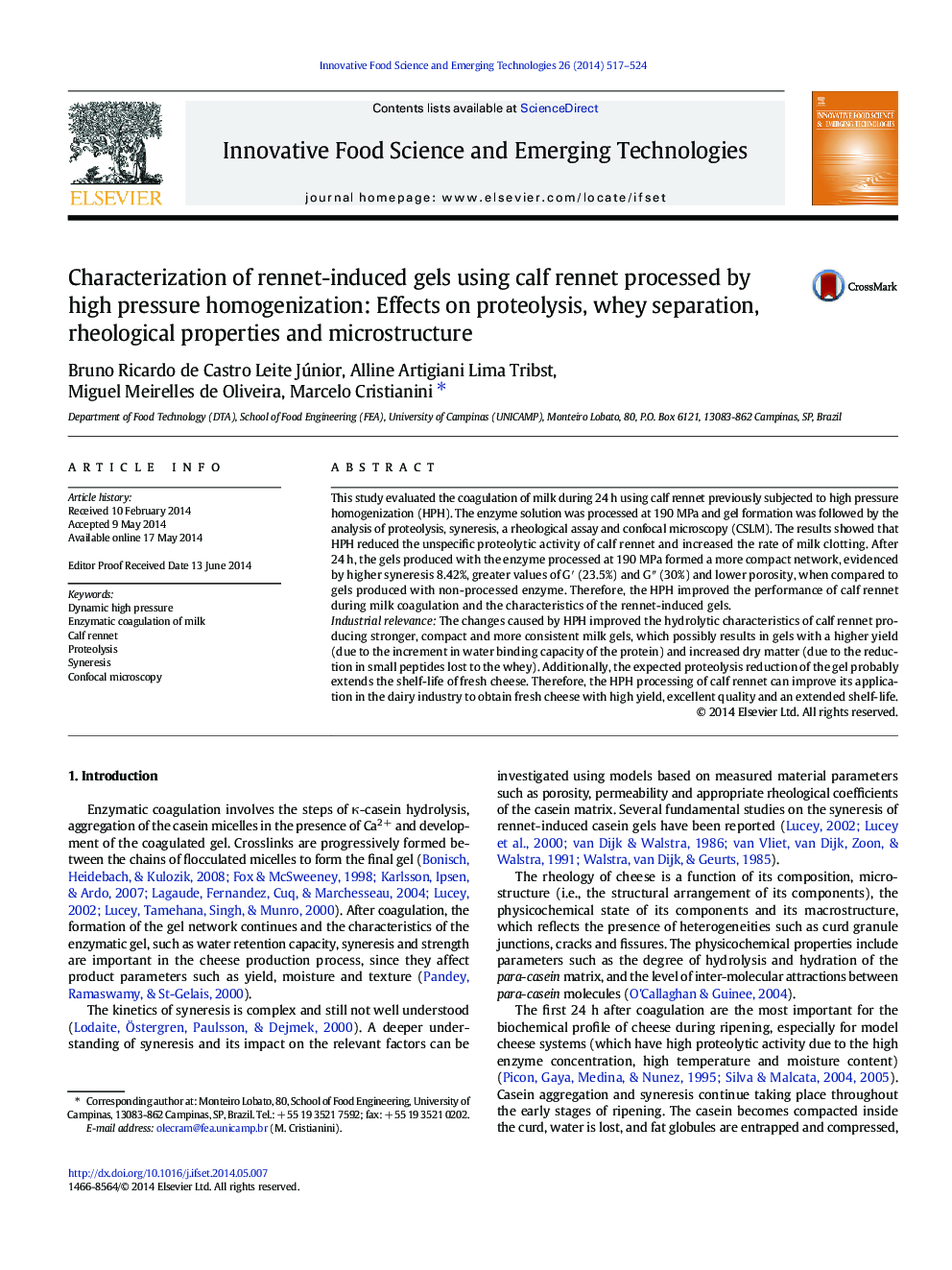| کد مقاله | کد نشریه | سال انتشار | مقاله انگلیسی | نسخه تمام متن |
|---|---|---|---|---|
| 2086709 | 1545540 | 2014 | 8 صفحه PDF | دانلود رایگان |
• Gels produced with the processed enzyme showed less proteolysis and greater syneresis.
• Protein aggregation is faster for gels clotted by the homogenized enzyme.
• The processed enzyme produced more dense, compact and consistent gel networks.
• After 24 h, the gel produced with the processed enzyme showed higher G′ and G″ values.
This study evaluated the coagulation of milk during 24 h using calf rennet previously subjected to high pressure homogenization (HPH). The enzyme solution was processed at 190 MPa and gel formation was followed by the analysis of proteolysis, syneresis, a rheological assay and confocal microscopy (CSLM). The results showed that HPH reduced the unspecific proteolytic activity of calf rennet and increased the rate of milk clotting. After 24 h, the gels produced with the enzyme processed at 190 MPa formed a more compact network, evidenced by higher syneresis 8.42%, greater values of G′ (23.5%) and G″ (30%) and lower porosity, when compared to gels produced with non-processed enzyme. Therefore, the HPH improved the performance of calf rennet during milk coagulation and the characteristics of the rennet-induced gels.Industrial relevanceThe changes caused by HPH improved the hydrolytic characteristics of calf rennet producing stronger, compact and more consistent milk gels, which possibly results in gels with a higher yield (due to the increment in water binding capacity of the protein) and increased dry matter (due to the reduction in small peptides lost to the whey). Additionally, the expected proteolysis reduction of the gel probably extends the shelf-life of fresh cheese. Therefore, the HPH processing of calf rennet can improve its application in the dairy industry to obtain fresh cheese with high yield, excellent quality and an extended shelf-life.
Journal: Innovative Food Science & Emerging Technologies - Volume 26, December 2014, Pages 517–524
